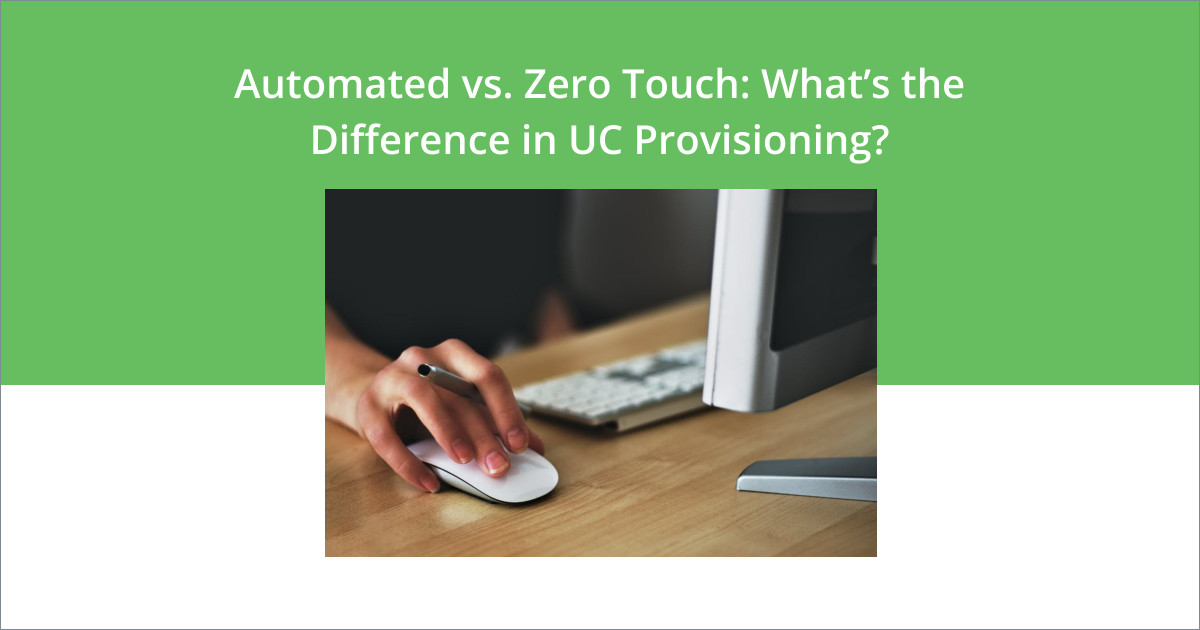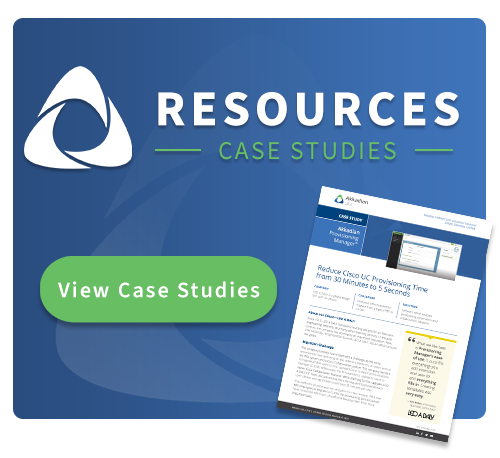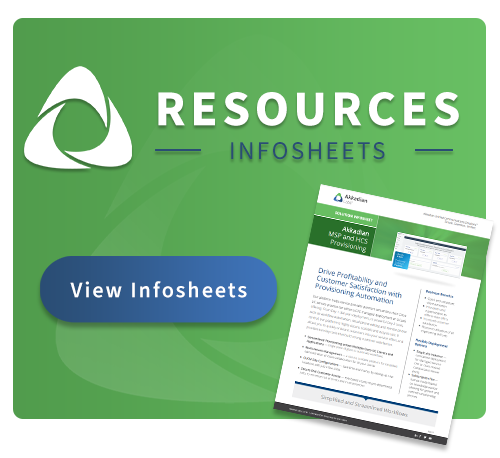Many UC engineers and IT admins will encounter two common phrases when searching for a UC provisioning and management solution – automated UC provisioning and zero-touch UC provisioning. This blog breaks down the key differences between these terms and what they mean for your UC provisioning workflows.
Zero-touch unified communications (UC) provisioning and automated UC provisioning are both methods for configuring and setting up users with the devices and UC applications needed to do their jobs.
While it’s common to see these two terms used interchangeably for any kind of automated UC user provisioning, the distinction lies in the levels of automation versus manual intervention required. Let’s define both terms to get a better understanding.
Defining Zero-Touch & Automated User Provisioning
Zero-touch UC provisioning is when users and devices are configured automatically without any manual intervention. That means as soon as a new user enters the system, they are configured in the needed UC applications without any intervention from an admin.
An automated UC provisioning workflow uses scripts or templates to automate the setup of users and devices, but unlike zero touch provisioning, some level of manual intervention from an admin is needed to start the provisioning task.
To sum up, all zero-touch provisioning is automated, but not all automated provisioning is zero-touch. While this distinction may seem small, it can have a major impact on your UC provisioning workflows. Below, we dig into how both zero touch and automated UC provisioning processes work and where they’re both best applied.
How Does Zero-Touch UC Provisioning Work?
Zero-touch provisioning works by automatically configuring and setting up devices or user accounts upon initial connection to a network or system. All of it is done without any manual intervention using pre-configured templates. Zero-touch workflows are ideal for large-scale jobs with standardized deployments.
A common use case for zero-touch UC provisioning is new user onboarding. This example shows exactly what makes a UC provisioning workflow zero touch.
User Onboarding with Zero-Touch Provisioning
Here is what an ideal onboarding workflow looks like using zero-touch provisioning.
- A new user is added to the organization.
- Their account information is automatically synced with the UC system through integration with directories like Active Directory (AD) or LDAP.
- This integration allows the UC system to access user details, such as name, email, department, and role.
- A provisioning software, pre-configured with templates, uses these details to create the user’s profile in the correct UC applications, including settings for voice, messaging and video collaboration tools.
- The provisioning solution then assigns appropriate permissions and configurations based on the new users’ roles in the organization.
New users will typically receive an email with a simple login process. Once they log in, they are fully set up with all the necessary tools to be productive. This reduces administrative burden and allows new hires and remote employees to get up and productive as quickly and effectively as possible.
How Does Automated UC Provisioning Work
Automated UC provisioning, while still reducing the time and resources of manual provisioning, involves a series of predefined steps or scripts to set up and configure devices or user accounts, but still typically requires some initial manual intervention.
Instead of initiating a workflow once a new user is detected in AD or LDAP, an administrator may need to trigger the provisioning process by selecting appropriate templates or running scripts tailored to specific requirements.
Once the process is started by the admin, the provisioning program takes over, executing those predefined steps. While it’s performing the task, the system may interact with various servers, databases and connected applications to retrieve the needed configuration details and apply them to the target device or account.
Throughout the process, admins may need to oversee or verify certain steps, such as confirming successful installations or ensuring compliance with organizational policies. Although automated, this approach provides flexibility and control, allowing for customization and adjustment as needed. This is crucial in complex and regulated environments where UC devices and user profiles require more in-depth customization.
While it may seem counterintuitive compared to zero-touch workflows, this approach to UC user provisioning still saves a lot of time and resources by allowing for more flexibility and control over your provisioning processes. This control reduces errors that could quickly proliferate in a bulk zero-touch provisioning workflow.
Conclusion: Prioritize Flexibility with UC Provisioning Automation
At the end of the day, any level of UC provisioning automation is preferable to manual UC provisioning. Manual provisioning comes with a large set of management challenges and is resource and time-intensive. Automation makes your organization’s UC management strategy more streamlined and efficient.
The key is finding an automated provisioning solution that is flexible enough to handle the needs of your organization. Many large enterprises need a solution that can do both; zero-touch provisioning capabilities for bulk onboarding and offboarding and automated templates and scripts with the flexibility for manual intervention where needed.
With the right provisioning solution in place, organizations can streamline their provisioning processes, reduce manual intervention, and adapt to various deployment needs, ultimately enhancing operational efficiency and scalability.
Interested in learning more about a flexible UC provisioning solution made for any level of automation? Get a demo of Akkadian Provisioning Manager.


